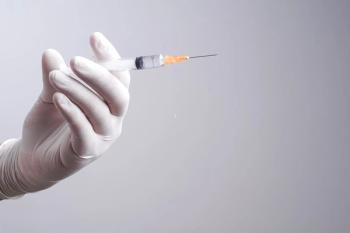
Study: VKC treatment proves inadequate, costly for symptom/complication control
According to investigators, treatment options available for patients diagnosed with vernal keratoconjunctivitis are less than adequate and these patients have higher rates of corneal complications and use more healthcare resources despite treatment.
Treatment options available for patients diagnosed with vernal keratoconjunctivitis (VKC) are less than adequate and these patients have higher rates of corneal complications and use more healthcare resources despite treatment, according to first author Euna Koo, MD, from Stanford University School of Medicine, Stanford, California.
Koo and her colleagues performed a retrospective database analysis to determine the burden of illness of this population of patients in the US. Patient data were obtained from the IBM MarketScan Commercial Claims Database; 422 patients were 18 years or younger (mean age, 9.4 years; 67.3% male) as of 2018 and had been treated with corticosteroids or an immunomodulator compared with matched 1,266 controls age 18 or younger who did not have VKC and fulfilled the study inclusion criteria.
Analysis of VKC data
The investigators reported that patients with VKC compared with those without VKC had significantly (p < 0.0001 for all comparisons) more corneal scars (1.7% vs. 0.1%, respectively, corneal ulcers (1.7% vs. 0%), keratitis (1.9% vs. 0.2%) and acute mucopurulent conjunctivitis (3.8% versus 0.9%) despite treatment with topical (60.7%) and topical (29.4%) corticosteroids, topical immunomodulators (3.3%), and other treatments (60.2%).
Of the patients with VKC treated with a topical corticosteroids (27.3%); 15.3% of patients filled the topical corticosteroid prescription 3 or more times.
Significantly higher rates of glaucoma or ocular hypertension were seen among the patients with VKC compared with those without VKC (0.5% vs. 0%, p < 0.0142).
In addition, the mean annual ophthalmology-related care costs were higher for VKC patients with VKC ($319 vs. $19, p < 0.0001).
The results suggested that the treatment options available as of 2018 were insufficient to prevent poor disease outcomes in children and adolescents with VKC and underscore the need for more effective corticosteroid-sparing therapies. More effective, safe treatment will enhance management of VKC symptoms and complications and reduce the costs for patients, caregivers, and healthcare systems, the study concluded.
Newsletter
Don’t miss out—get Ophthalmology Times updates on the latest clinical advancements and expert interviews, straight to your inbox.












































